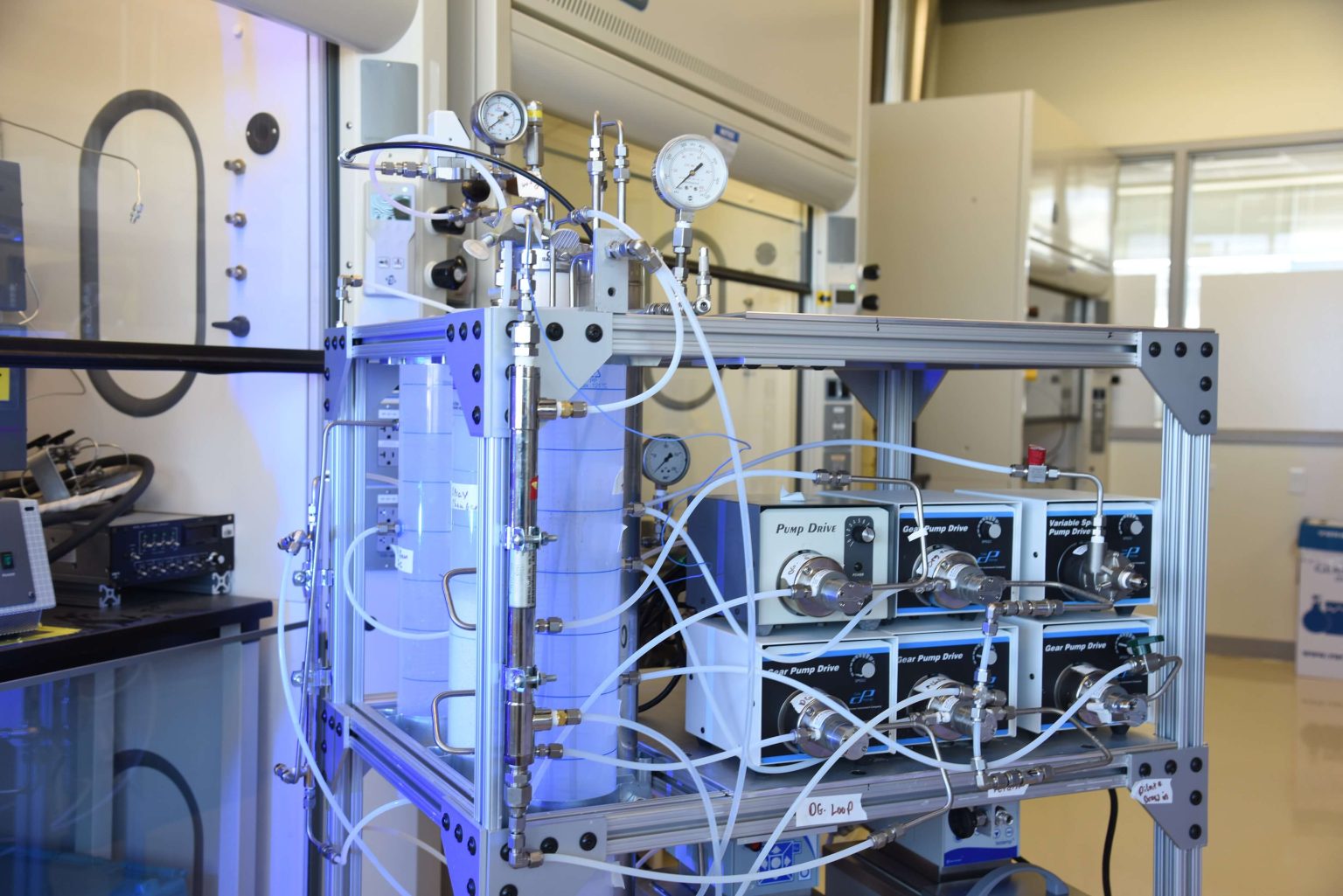Access to national laboratory research collaborations just got a little easier for three companies that won grants in May to work with Idaho National Laboratory experts.
The three firms collaborating with INL have been slated to receive Phase I grants through the U.S. government’s Small Business Innovation Research (SBIR) program, which helps support promising new ideas that still might be too risky to attract investment from the private sector.
The variety of awardees reflects the breadth of research taking place at INL. One project involves nanoparticles – specks of matter thousands of times thinner than a human hair – to advance the performance of microwave communications. The second technology aims to save wastewater treatment costs with membranes and geothermal heat. The third grant supports a computer-based risk assessment modeling program to improve safety and reduce operating costs at nuclear power plants.
Coordinated by the U.S. Small Business Administration, the SBIR program is intended to help certain small businesses conduct research and development (R&D). Funding takes the form of contracts or grants. The recipient projects must have the potential for commercialization and must meet specific U.S. government R&D needs. Phase I, the startup phase, makes awards of up to $150,000 for approximately six months for exploration of a technology’s technical merits or feasibility. Phase II offers grants of up to $1 million and higher for two years to facilitate expansion of Phase I results.
On May 21, the U.S. Department of Energy announced that the following three companies would receive SBIR grants to work with INL.
Voxtel, Inc., of Beaverton, Oregon, is seeking to use nanoparticle synthesis methods developed at INL to advance the performance of microwave radome systems. A radome is a weatherproof enclosure that protects a radar antenna, constructed of material that minimally attenuates the electromagnetic signal transmitted or received by the antenna. Nanoparticles are so small that most of their atoms are on the surface, making them exceptional for transmitting energy. They are used to make transistors and solar energy panels more effective, but the challenge has always been creating them at prescribed uniform sizes. INL researchers have developed a process using supercritical carbon dioxide, which is CO2 kept at a temperature and pressure that allows it to travel through solids like a gas and dissolve materials like a liquid.
Porifera, Inc., of San Leandro, California, has collaborated with INL since 2013 on carbon capture and water treatment. The latest SBIR Phase I award will help the company design a pilot system aimed at concentrating and treating wastewaters from industrial processes using geothermal heat. The technology uses specialized salts called switchable polarity solvents (SPSs). After creating osmotic pressure to draw water through a membrane, leaving contaminants behind, SPSs separate from the water to be used again. INL’s SPS Forward Osmosis process is estimated to be far less expensive than traditional wastewater processing because it avoids the distillation of water and also uses less expensive heat energy sources, under 100 C.
FPoliSolutions LLC, of Pittsburgh, Pennsylvania, is adding INL’s EMRALD (Event Modeling Risk Assessment using Linked Diagrams) technology to its suite of risk assessment and management methodologies for use in the commercial nuclear industry. The company is building on a previous work bringing the INL-developed RAVEN (Risk Analysis Virtual Environment) software to industry. While RAVEN was developed for scientific research, EMRALD is more a user interface to help analysts develop modeling programs.
The next opportunity for small businesses to participate in the DOE SBIR program is July 18 when DOE issues the topics for FY-19 Phase 1 funding opportunities. To learn more, visit https://science.energy.gov/sbir/.
To discover more opportunities to partner with INL on SBIR grants, contact the lab at [email protected].







